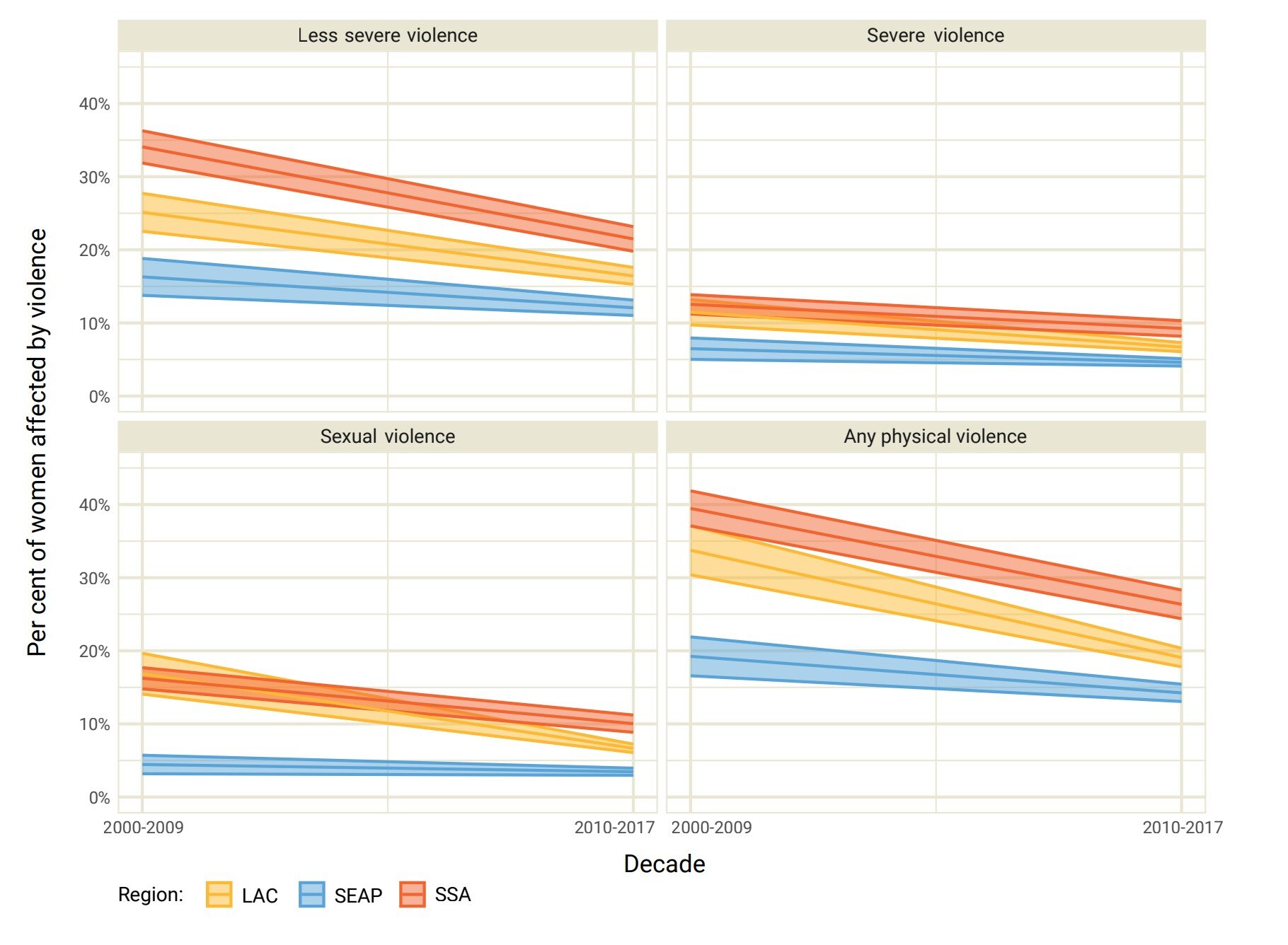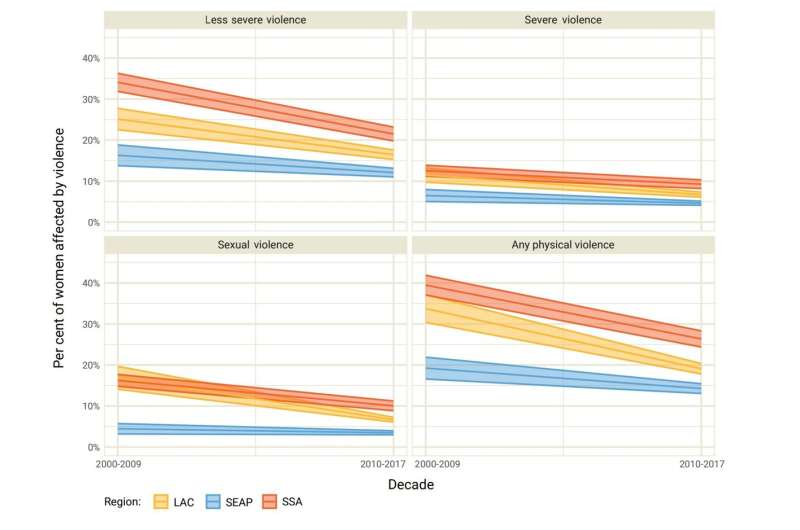

Tens of millions of women and girls in sub-Saharan Africa will experience catastrophic levels of intimate partner violence because the world is failing to make progress on the climate crisis, according to new projections by UNFPA, the UN sexual and reproductive health agency.
The report titled “Climate Change Impacts and Intimate Partner Violence in Sub-Saharan Africa,” by UNFPA, the International Institute for Applied Systems Analysis (IIASA), and the University of Vienna shows that rising global temperatures are leading to increasing rates of intimate partner violence.
In the worst-case scenario where emissions rise, temperatures warm by more than 4° C by the end of the century, and socioeconomic development stalls, the number of people experiencing intimate partner violence in sub-Saharan Africa will almost triple from 48 million in 2015 to 140 million in 2060.
The impacts of human-induced climate change are intensifying, marked globally by rising temperatures and extreme weather events. Studies show that extreme temperatures and heat waves can drive up aggression and intimate partner violence. The collapse of agriculture, water scarcity and housing insecurity is a further trigger—leading to increased conflict and the risk of women and girls suffering physical and emotional abuse. Natural disasters linked to warming temperatures trigger forced displacement, which is associated with higher levels of intimate partner violence.
In parts of sub-Saharan Africa, which is on the frontlines of the climate crisis, more than half of women and girls reported experiencing intimate partner violence in the previous 12 months.
“Extreme heat threatens the safety and well-being of the most vulnerable women and girls all across Africa,” said UNFPA Executive Director Dr. Natalia Kanem. “Heat stress can put the health of pregnant women and their babies at risk, increasing the chance of preterm birth and stillbirth,” she added. “The climate crisis has also led to shocking levels of violence in the home—an impact often overlooked by policymakers.”
This spike in violence can be averted if Member States strive to limit global temperature rise to 1.5 degrees Celsius, as outlined in the Paris Agreement, and pursue the 2030 Agenda for Sustainable Development, to reduce emissions, build climate resilience and empower women and girls through education, training and economic investment.
The best-case scenario will see the share of women affected by violence in sub-Saharan Africa decline from 24% in 2015 to 14% in 2060. (The number of cases will increase to 48.95 million in 2060 due to population growth.) Overall, the difference between climate action success and failure is 1.9 billion preventable cases of intimate partner violence between 2015 and 2060.
“UNFPA’s new research points the way forward: decisive climate action needs to build resilience in affected communities, which starts with putting the needs of women and girls first,” said Dr. Kanem.
Women and girls who experience intimate partner violence need access to climate-resilient health care, including medical and psychological support. Member States must invest climate finance in health and protection systems that work for women and girls in a future of increasing climate shocks and displacements. Countries must also include the sexual and reproductive health and rights of women and girls—including the risk of gender-based violence—in their national climate plans.
More information:
Report: esaro.unfpa.org/en/publication … e-sub-saharan-africa
Citation:
Domestic violence in sub-Saharan Africa could triple by 2060, warns report (2024, September 5)
retrieved 5 September 2024
from https://phys.org/news/2024-09-domestic-violence-saharan-africa-triple.html
This document is subject to copyright. Apart from any fair dealing for the purpose of private study or research, no
part may be reproduced without the written permission. The content is provided for information purposes only.